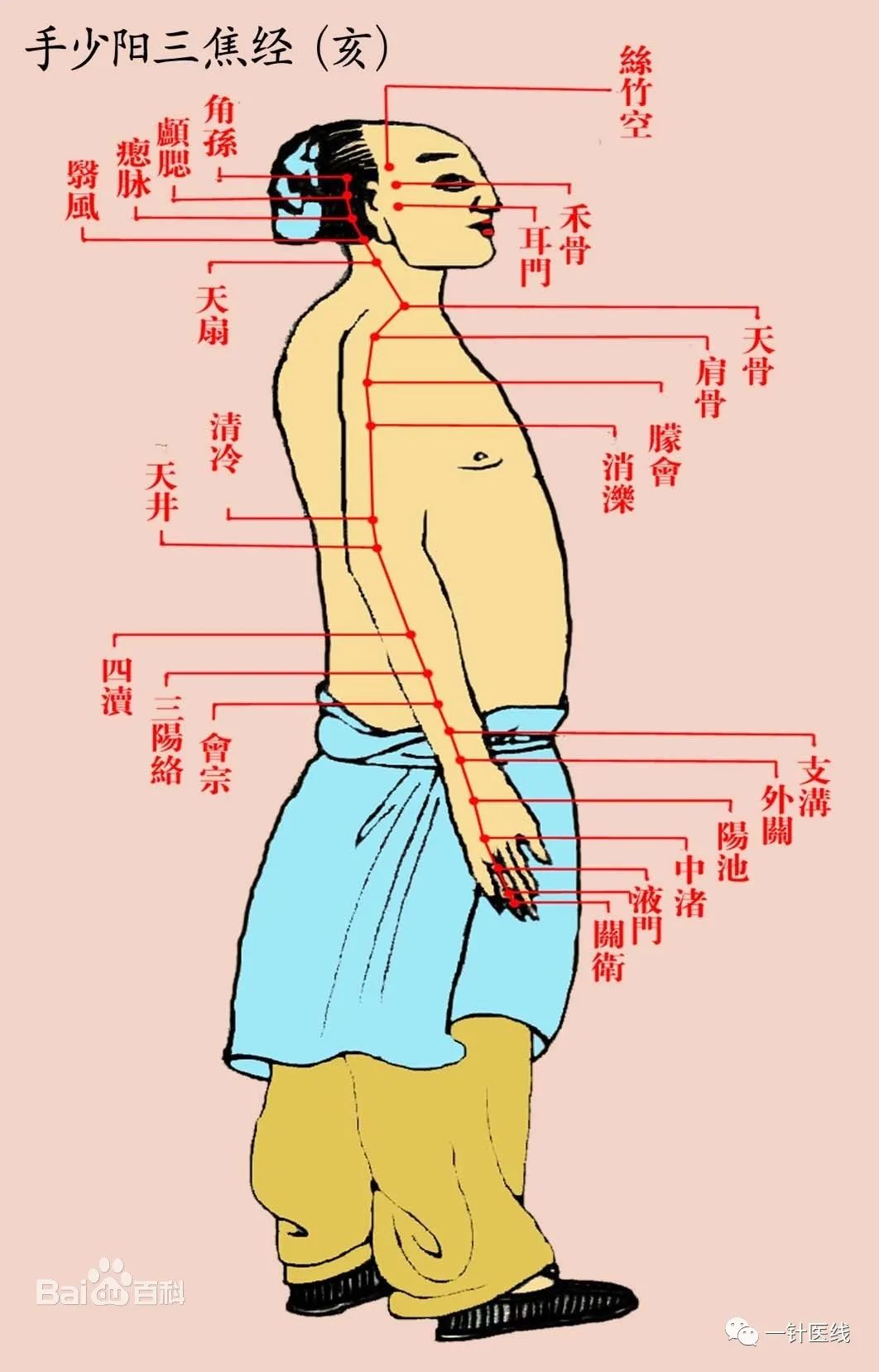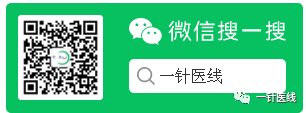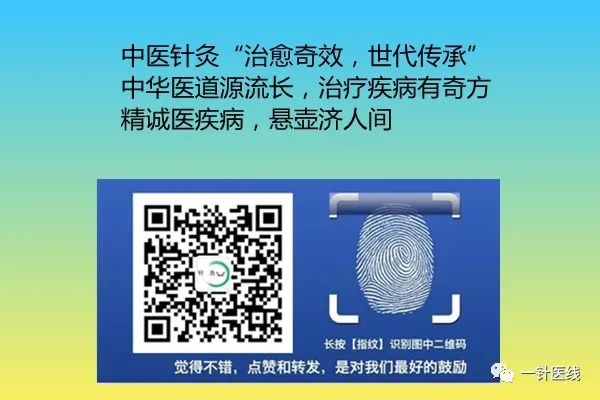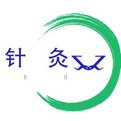
The three Yin and three Yang meridians of the hands and feet communicate with each other through the channels and collaterals, forming six pairs, establishing an “interior-exterior” relationship. This means that “the Foot Taiyang (Greater Yang) and Shaoyin (Lesser Yin) are interior and exterior, Shaoyang (Lesser Yang) and Jueyin (Reverting Yin) are interior and exterior, Yangming (Bright Yang) and Taiyin (Greater Yin) are interior and exterior, representing the Yin and Yang of the feet. The Hand Taiyang and Shaoyin are interior and exterior, Shaoyang and the Heart Master (Hand Jueyin Heart Protector) are interior and exterior, Yangming and Taiyin are interior and exterior, representing the Yin and Yang of the hands.”
The two meridians that are mutually interior and exterior run along the inner and outer sides of the limbs in corresponding positions and connect at the ends of the limbs; they also correspond to the organs that are mutually interior and exterior, thus forming a relationship of Yin and Yang between the organs. The interior-exterior relationship of the twelve meridians not only strengthens the connection due to the interlinking of the two meridians but also because they correspond to the same organ, allowing for physiological functions to cooperate and pathological influences to affect each other. In treatment, the acupoints of the mutually interior and exterior meridians often intersect.
Transmission Along the Meridians
For over half a century, scholars both domestically and internationally have tirelessly explored the issues surrounding meridians. The first question encountered was whether the meridians described by ancient texts truly exist. At that time, some believed that the meridians referred to by ancient people were merely the blood vessels recognized in modern anatomy, and that there was no independent meridian system. On the other hand, some foreign researchers claimed to have discovered the physical existence of meridians, which was later proven by Chinese scholars to be an illusion.
In the 1950s, a strange phenomenon was discovered during acupuncture: some individuals reported a sensation that moved along the meridian pathways during treatment. This phenomenon was later formally named the “meridian sensation transmission phenomenon,” and those who experienced it were termed “meridian-sensitive individuals,” although this group constitutes only a small portion of the population. The discovery of the meridian sensation transmission phenomenon reversed the belief that meridians were merely blood vessels, as blood vessels clearly cannot produce such a sensation of movement along the meridians. Additionally, it was found that the skin resistance along the meridian pathways was lower, providing a certain basis for verifying the objective existence of meridians.
By the 1970s, more in-depth studies on the meridian sensation transmission phenomenon revealed some peculiar characteristics:
● The speed is relatively slow, on the order of centimeters per second.
● It can be blocked by mechanical pressure, injection of saline, and cooling.
● It can exhibit retrograde and fatigue sensations.
● It can bypass scar tissue and local anesthesia areas, tending towards pathological sites.
● There may be vasodilation and mild edema along the pathway of sensation transmission, and electromyographic activity can be detected.
● Some amputees report phantom meridian sensations at the site of amputation.
These phenomena complicate the understanding of meridians, as simple neural transmission or blood flow cannot explain these characteristics. However, since the characteristics of meridian sensation transmission primarily rely on the subjective feelings and descriptions of patients, their authenticity must be somewhat discounted. Therefore, concurrent studies on observable meridian phenomena and objective detection of meridians have become very important. These include skin allergies and pigmentation along the meridian during acupoint stimulation, detection of micro-sound waves (meridian sound emission), latent meridian sensation transmission (a phenomenon present in over 90% of the population), and other physical properties of meridians.
In the mid-1980s, research on meridians received significant attention from the state, leading to the establishment of China’s first national meridian project, the “Seventh Five-Year Plan” national key project—”Objective Detection of the Meridian Pathways of the Fourteen Meridians.” At this time, scientists were no longer satisfied with simple subjective perceptions to explain the existence of meridians, but sought to prove the objective existence of meridian pathways through more scientific means. The most important discovery during this period was the use of a gamma camera to capture the trajectory of isotopes moving along the meridian pathways. The use of biophysical methods to study meridians became a significant feature of meridian research, with researchers discovering physical characteristics such as low resistance, high sound vibration, and good sound-light-heat conduction along the meridian pathways, as well as isotope migration. This work was summarized in an important research publication—”Biophysics of Acupuncture Meridians,” which marked a milestone in objectively verifying the existence of meridians.
Entering the 1990s, China successively undertook two national meridian climbing plan projects, “Eighth Five-Year Plan” and “Ninth Five-Year Plan.”
● Neural Theory: Suggests that meridian sensation transmission is the result of excitation transmission between neurons.
● Body Fluid Theory: Proposes that Qi and blood in TCM refer to various body fluids, and that meridians are channels for the movement of body fluids, with the movement of body fluids stimulating nerves to produce meridian sensation transmission.
● Energy Theory: Considers meridians as channels for the transmission of certain physical energy and information.
● Self-Regulation Theory: Proposes that meridians are primarily based on the self-regulation mechanism, one of the three regulatory mechanisms in Western medicine, and the corresponding unified fractal meridian theory of “self-regulation – body fluid regulation – nerve regulation” (Deng’s Theory).
● Cell Group Theory (Cell Sociology): Suggests that meridians are formed by rough, non-smooth, non-tubular cell groups that exhibit “self-regulation”.
● Fractal Theory: Proposed in 1996, the “Fractal Meridian” (fractal dimension meridian) and the “Gap Dimension” (error) meridian were introduced by Zhang Shenghong. The “Gap Dimension” and “Fractal Dimension” have essential substantive differences.
● Gap Theory: Zhang Shenghong and others’ Gap Dimension meridian suggests that meridians exist in 0.3 dimensions, while fractal dimensions are 2.7 dimensions (with some doubts).
● Free Radical Theory: Rao Pingfan, Liu Shutao, Guo Jingke, and others believe that meridians are closely related to free radicals, and have even obtained the world’s clearest photograph of meridian pathways using free radical imaging technology.
Modern Developments
Modern fractal meridians, proposed by Zhang Shenghong in 1996, introduced the concept of “Gap Dimension” (error): gaps, and proposed “Fractal Dimension Meridians”; meridians are rough, non-smooth, non-tubular, and consist of cell-filled cell groups.
● Self-Regulation – Meridians
● Cell Group – Meridians, Cell Sociology Meridians
● Fractal Meridians
The Theory of Meridian Mountain Ranges: Scientific Evidence for TCM Meridians[Revised Draft] The existence of meridians has been proven through two thousand years of medical practice and various medical research experiments over the past few decades, yet no recognized special meridian substance has been found in human anatomy. Therefore, we should say that meridians are likely not composed of special substances, but rather represent an unknown property of existing substances in the human body. Based on this viewpoint, I have made the following arguments:
1. A New Perspective
1. Meridians may all be distributed on the surface of muscles, and the phenomenon of meridians is realized through the bioelectric changes of muscle cells; thus, it should be recognized that meridians are a special property of muscles.
2. Meridians are located between two blood vessels, and their existence should be related to the influence of blood vessels.
3. The phenomenon of meridians is more pronounced in young people, women, and healthy individuals, while it is less pronounced in the elderly, men, and those with chronic illnesses. The consumption of different foods before and after meals can also cause changes in meridian phenomena, indicating that meridians are likely related to the properties of blood.
4. Many natural phenomena have similar principles, such as planets revolving around stars, electrons orbiting atomic nuclei; similarly, the soil formed between two rivers creates mountains, so could the muscles between two blood vessels also form a special mountain range—meridians?
5-10 Please refer to the encyclopedia: Meridian Theory entry for further information.
2. Modern Scientific Evidence
1. Physiology states that proteins and amino acids exhibit negative charges in alkaline blood and positive charges in acidic blood; healthy human blood is weakly alkaline. I believe that when proteins exhibit negative charges, they attract and neutralize the positive ions of salts in the blood while repelling the negative ions of salts. Some of these repelled negative ions will neutralize the positive ions adsorbed on the outside of red blood cells, resulting in a greater number of negative ions inside red blood cells than positive ions outside, causing red blood cells to exhibit an overall negative charge. Another portion of the repelled negative ions, under blood pressure, enters the vascular wall, neutralizing the positive ions in the interstitial fluid of vascular smooth muscle cells, resulting in a greater number of negative ions inside the smooth muscle cells than in the interstitial fluid, causing the smooth muscle cells to exhibit an overall negative charge. Therefore, we can say that the entire blood vessel exhibits a negative charge.
Two negatively charged blood vessels will cause the positive ions in the interstitial fluid of other muscle cells between the two blood vessels to converge towards the blood vessels, forming a line of muscle cells where the number of negative ions inside the cells exceeds the number of positive ions in the interstitial fluid. This line of muscle cells exhibits an overall negative charge, and the balance between positive and negative ions between the muscle cells is in a weak equilibrium state.
2. Experiments have shown that the sound produced when striking along the meridian is louder than when striking on either side, which directly proves that the positive ions in the interstitial fluid of muscle cells along the meridian flow towards the two sides, resulting in the formation of a cavity along the meridian.
3. Physiology tells us that the small and medium blood vessels of the human body have automaticity, which precisely proves the correctness of the assertion regarding the overall negative charge of vascular smooth muscle cells. This weak balance of positive and negative ions inside and outside the smooth muscle cells is the basis for the automaticity of small and medium blood vessels.
4-12 For detailed content, see the encyclopedia: Meridian Theory.
3. Refutation of This Argument
As I do not have data on human three-dimensional anatomy, I hope experts can critique this argument based on the following points:
1. Do the meridian lines primarily or entirely run on the muscles?
2. Are the meridian lines located at the capillaries where arteries and veins transform into each other?
3. Does the consumption of different foods affect the meridians?
4. Does the speed of the pulse affect the meridian phenomena?
Functions
Connecting the Organs
The “Lingshu” states: “The twelve meridians are internally connected to the organs and externally linked to the limbs and joints.” The relative coordination and unity of the body’s five zang organs, six fu organs, limbs, bones, five senses, and skin are achieved through the communication of the meridian system. The meridians, collaterals, and the eight extraordinary meridians, along with the fifteen collaterals, crisscross and connect the internal and external, linking the various organ systems of the body; the tendons and skin connect the muscles and skin of the limbs; the superficial collaterals and the sun collaterals connect the finer parts of the body. Thus, the meridians connect the body into an organic whole.
The communication function of the meridians is also reflected in their conductive capabilities. External pathogens and various stimuli can be transmitted to the organs; dysfunctions of the physiological functions of the organs can also be reflected on the surface of the body. These are specific manifestations of the communication function of the meridians.
Circulating Qi and Blood
The “Lingshu” states: “The meridians are the channels for circulating blood and Qi, nourishing Yin and Yang, moistening the tendons and bones, and facilitating the joints.” Qi and blood are the material basis for life activities in the human body; all tissues and organs can only perform their normal physiological functions when nourished and moistened by Qi and blood. The meridians are the channels for the circulation of Qi and blood in the body, distributing nutrients to all tissues and organs, allowing the organs to be nourished, the tendons to be moistened, and the joints to be facilitated.
Resisting Pathogens
The nutritive Qi circulates within the meridians, while the defensive Qi circulates outside the meridians. The meridians “circulate blood and Qi,” allowing the nutritive and defensive Qi to permeate the body, harmonizing the five zang organs internally and dispersing the six fu organs, while externally resisting pathogens and preventing internal invasion. External pathogens invade the body from the surface to the interior, starting with the skin and hair. The defensive Qi is abundant in the collaterals, which are distributed throughout the body and densely located in the skin. When external pathogens invade the body, the defensive Qi is the first line of defense, playing a protective role against external pathogens. As stated in the “Suwen: Discussion on Needling”: “When pathogens invade the body, they must first settle in the skin and hair, linger without leaving; if they settle in the sun collaterals, they linger without leaving; if they settle in the collaterals, they linger without leaving; if they settle in the meridians, they connect to the five zang organs and disperse into the intestines and stomach.”



